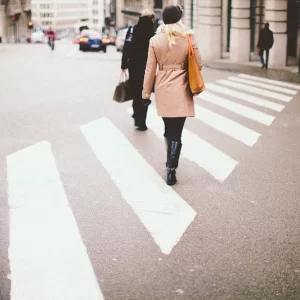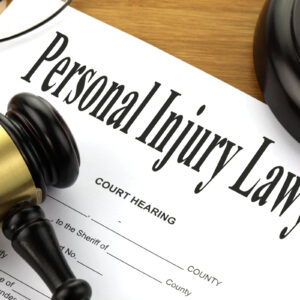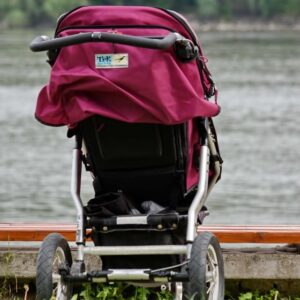Rear-end collisions are common, but when they happen in the confusing and often chaotic environment of a construction zone, the consequences can be particularly devastating. Determining who’s at fault – and therefore liable – can be complex. This article will help you understand the factors involved and what to do if you’ve been involved in a rear-end accident in a work zone.
Understanding Rear-End Accidents in Construction Zones: An Overview
Construction zones present a unique set of hazards for drivers. Reduced speeds, lane shifts, unexpected stops, flaggers, and heavy equipment all contribute to increased risk. Rear-end collisions are a frequent result, often stemming from:
- Following too closely: In congested conditions, drivers may tailgate to avoid losing their place in line, leaving insufficient space to react.
- Distracted driving: Cell phones, navigation systems, and even conversations can divert a driver’s attention, leading to delayed reaction times. According to the National Highway Traffic Safety Administration (NHTSA), distracted driving was a factor in over 3,100 traffic fatalities in 2020.
- Speeding: Exceeding the posted (and often reduced) speed limit in a construction zone significantly increases the risk of a crash.
- Sudden stops: Traffic can come to a halt unexpectedly due to construction activity, leaving drivers unprepared to stop in time.
- Poor visibility: Dust, construction equipment, and temporary barriers can impair visibility, making it harder to anticipate changes in traffic flow.
Liability in a Rear-End Collision: General Principles
Generally, in a rear-end collision, the driver who strikes the vehicle in front is presumed to be at fault. This is because drivers have a duty to maintain a safe following distance and pay attention to the road. However, this isn’t always a black-and-white situation.
The legal concept of negligence plays a central role. To prove negligence, the injured party must demonstrate that the other driver:
- Had a duty of care (to drive safely).
- Breached that duty (by speeding, tailgating, or being distracted).
- The breach caused the accident.
- The accident resulted in damages (injuries, vehicle damage, etc.).
Construction Zone Specifics: Increased Risks and Responsibilities
Construction zones amplify the general duty of care. Drivers are expected to be even more vigilant and cautious in these areas. Moreover, construction companies and government entities also have a responsibility to ensure safety.
- Clear signage: Proper warning signs, reduced speed limits, and lane closure notifications are crucial.
- Safe work zone design: The layout of the construction zone should minimize hazards to drivers, with adequate space for lane shifts and merging.
- Flagger visibility: Flaggers must be easily seen and use clear signals to direct traffic.
Failure to uphold these responsibilities can contribute to accidents and increase the likelihood of liability for parties beyond the following driver.
Determining Fault in a Construction Zone Rear-End Accident
While the rear driver is often at fault, circumstances can shift the blame, or share it, especially in construction zones. Consider these scenarios:
- Sudden and unexpected stop: If the lead driver stopped abruptly without a valid reason (not due to traffic or construction), they may bear some responsibility. However, this is a difficult argument to make if road conditions warranted cautious, slower speeds.
- Faulty brake lights: If the lead vehicle’s brake lights were not functioning properly, the following driver might have a stronger defense.
- Construction zone negligence: If the construction zone was poorly marked or lacked proper safety measures, the construction company or government agency could be liable.
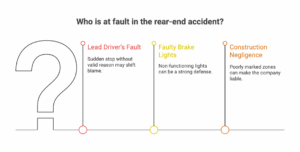
Evidence like police reports, witness statements, photos of the scene, and vehicle damage assessments are crucial in determining fault.
Potential Liable Parties Beyond the Following Driver
In a construction zone accident, liability can extend beyond the drivers involved. Consider these possibilities:
- Construction companies: If the work zone wasn’t properly set up or maintained, the construction company could be held liable for negligence.
- Government entities: If the road design or signage was inadequate, the city, county, or state responsible for the road could be liable.
- Vehicle manufacturers: In rare cases, a vehicle defect, such as faulty brakes, could contribute to the accident, making the manufacturer liable.
Seeking Compensation After a Construction Zone Rear-End Accident: Legal Options
If you’ve been injured in a rear-end accident in a construction zone, you may be entitled to compensation for:
- Medical expenses (past and future)
- Lost wages (past and future)
- Vehicle damage
- Pain and suffering
- Loss of enjoyment of life
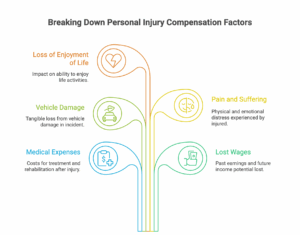
Several types of insurance coverage may apply:
- The at-fault driver’s liability insurance: This covers damages to the other party if the driver is at fault.
- Uninsured/Underinsured Motorist (UM/UIM) coverage: This protects you if the at-fault driver doesn’t have insurance or has insufficient coverage.
- Med-Pay or Personal Injury Protection (PIP): This covers your medical expenses, regardless of fault (depending on the state).
- Workers’ Compensation: If you were injured while working, you may be eligible for workers’ compensation benefits.
Consider seeking legal advice from a personal injury attorney. They can investigate the accident, identify all potential liable parties, and negotiate with insurance companies to maximize your compensation. Example: A Texas driver received a $500,000 settlement after a rear-end collision in a poorly marked highway construction zone left them with severe neck injuries.
Preventing Rear-End Accidents in Construction Zones: Safety Tips
Beyond the obvious advice to avoid distractions, here are proactive strategies to prevent rear-end collisions in construction zones:
- Increase following distance: Double or triple your normal following distance to allow ample time to react.
- Anticipate sudden stops: Be prepared for traffic to stop unexpectedly due to construction activity. Scan ahead for brake lights and potential hazards.
- Maintain a consistent speed: Avoid sudden acceleration or deceleration. Use cruise control when appropriate (but disengage it in heavy traffic).
- Merge smoothly: When lanes merge, signal early and merge gradually, allowing other drivers time to adjust.
- Stay alert: Pay close attention to your surroundings and avoid fatigue.
Construction zones present heightened risks, and responsible driving is paramount to prevent accidents and injuries. Understanding your rights and responsibilities can help protect you in the event of a rear-end collision. Remember, consulting with an attorney can provide valuable guidance and support.
